There is so much theses days, in fashion and in our homes, reflecting a love for exotic chic. Even long before these far off places were easily accessible, westerners have been adopting styles as they envisioned life in these cultures. In Turquerie, a book from last year that I have been meaning to share, author Haydn Williams thoroughly explores this fascinating area of fine and decorative art that still influences us today.
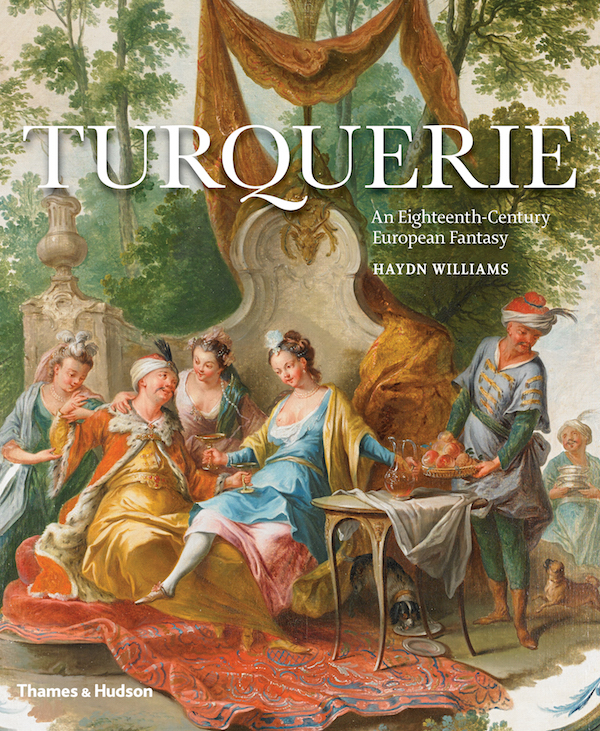 As early as 1453, when the Ottoman Turks captured Constantinople, Europeans became curious about this exotic domain. Artists such as Pieter Coecke van Aelst, whose works from his travels there attempting to sell his tapestries, offered glimpses of the Near East. But the craze for turquerie, the Western interpretation of Turkish style, didn’t reach its zenith until the last quarter of the eighteenth century, evidenced by a proliferation of Turkish-inspired literature, theater, ceramics, painting and interior and landscape designs.
As early as 1453, when the Ottoman Turks captured Constantinople, Europeans became curious about this exotic domain. Artists such as Pieter Coecke van Aelst, whose works from his travels there attempting to sell his tapestries, offered glimpses of the Near East. But the craze for turquerie, the Western interpretation of Turkish style, didn’t reach its zenith until the last quarter of the eighteenth century, evidenced by a proliferation of Turkish-inspired literature, theater, ceramics, painting and interior and landscape designs.
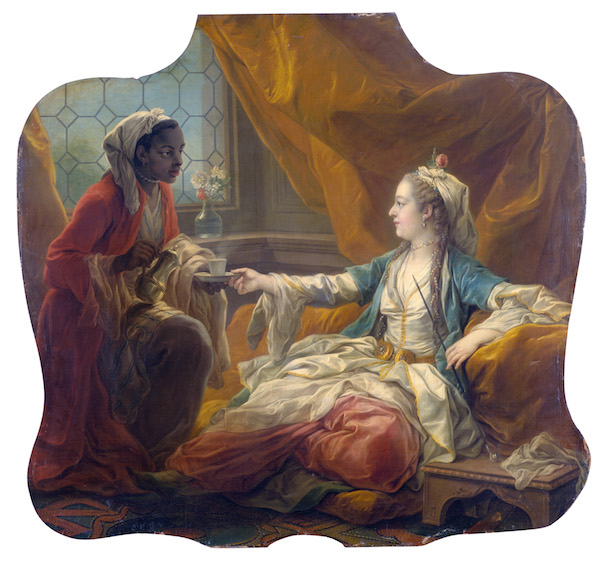
The French translation of A Thousand and One Nights by Abbé Antoine Galland spurred the French imagination and prompted dreams of adventure, power, passion, love and ideas of an exotic people and culture. Turkish attire became popular in portraiture as seen in a painting by Carle van Loo, above, for the bedchamber of Madame de Pompadour at château de Bellevue. Even pets were included in the mania for exotic chic.
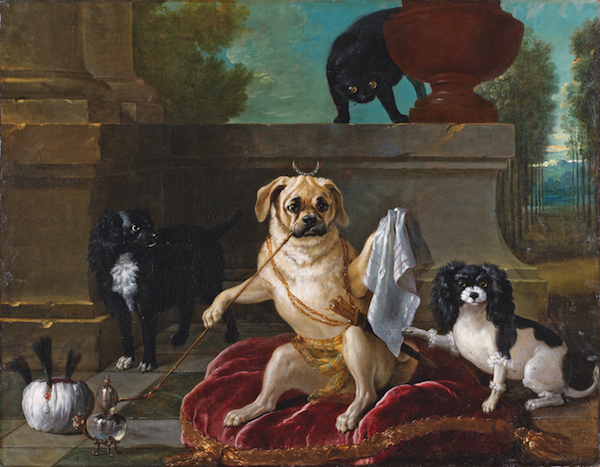
The concept of the harem was a particular obsession which the French reinterpreted as an intimate boudoir: the boudoir turc. Marie-Antoinette and her brother-in-law, the Comte d’Artois, shared a passion for the Turkish taste and extravagant lifestyles filled with pleasures. She was enamored of the theater and he of women. The creation of a boudoir turc might be considered among their list of amusements, as between them, they commissioned eight Turkish-inspired rooms, a subject which was explored several years ago in a special exhibition at the Frick.
 The exotic chic of Turkish figural elements was employed and elaborated upon by artist Christopher Huet in his famous decorative panels. The earliest was most likely at the château d’Orgnon-en-Valois, above, not far from Chantilly where he created his legendary rococo masterpiece of singerie.
The exotic chic of Turkish figural elements was employed and elaborated upon by artist Christopher Huet in his famous decorative panels. The earliest was most likely at the château d’Orgnon-en-Valois, above, not far from Chantilly where he created his legendary rococo masterpiece of singerie.
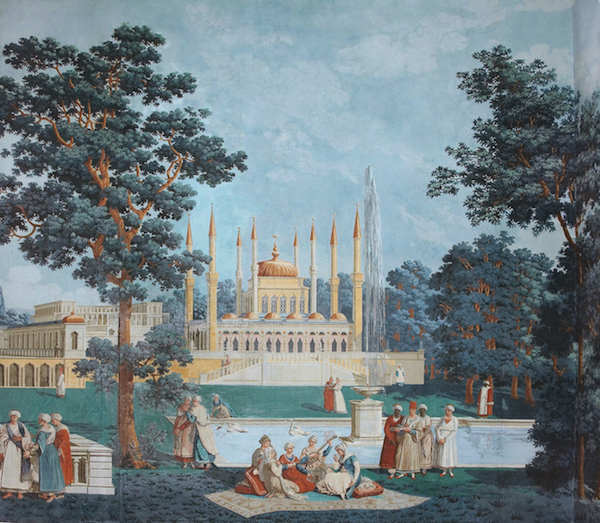
The fascination with Ottoman lands continued into the 19th century as seen in the panoramic wallpaper of Joseph Dufour et Cie from 1812 above. Even today, the exotic chic of these scenic wallpapers is in high demand. And in Paris, Eugène de Beauharnais, who had acquired the hotel de Villeroy, commissioned a spectacular cabinet turc, below. Hie mother, the future Empress Joséphine, oversaw much of the work during his absences.
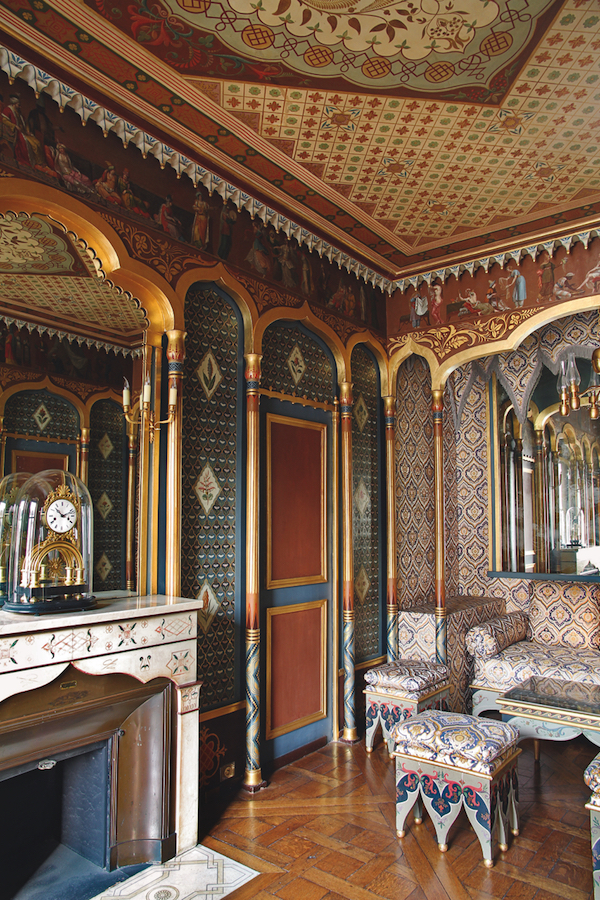
Hallmarks of turquerie including tenting, mirrors, cushions and accoutrements evocative of a luxurious exotic culture are still evident in our culture and interiors today. This fascinating tome offers insight into the interconnected history of a global style that is as relevant today as it was centuries ago.




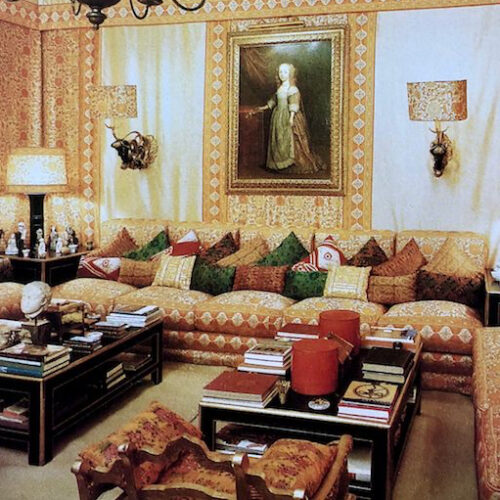
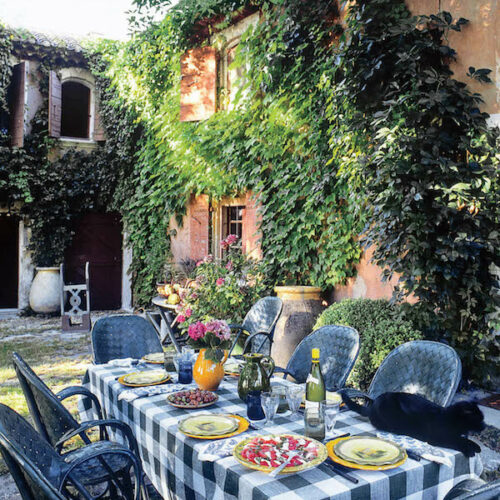

Love this post. I have long been fascinated with Chinoiserie and really not aware of this Turkish variation and all of its aspects. I remember finding pictures of a relative’s house in which there was an area they called their “Turkish Corner”, a banquette all piled with exotic pillows and fringe and rugs…dating back to the early 1900’s in a small town in Texas, of all things. Guess the Turkish rage took a while to permeate the back country, atho that was around the time a lot of painters were doing “orientalist” pieces…..Were the Singeries also Turkish? I had always assumed them to be Chinese. Love your blog.
Hi Sherry – Thank you! Love that Texas Turkish corner. Singeries were not specifically Turkish. They have a long history stretching back to antiquity but seem to have hit their peak during mid 18th century France.
Wonderful post! Rushing out to buy the book!
I love this. The fashion fabrics seem to have much less pattern in this style so as not to clash with the detailed ornamentation? I have to see the book!
Hi Stacey–thank you so much for this post! This is a subject dear to my heart from work I did in graduate school. For a real treat, check out Jean Etienne Liotard’s 18th c portraits of Europeans living in Constantinople, they are dressed a la turque and often appear in very simple Turkish interiors…so lovely.
best
Katherine Glendinning
Wonderful post Stacey. I would love to have even a love Turkish styled stool!!
This book is wondrous!!
xoxo
Karena
The Arts by Karena
I have been interested in buying this book since I have a terrible Ottoman Empire Fetish …bordering on neurosis! Turkey is the most fascinating place I’ve ever been. I can’t imagine what it must have felt like for westerners to explore in the 18th C. I will certainly get the book now:) This was the reminder I needed. Thanks for posting:)
Thank you Stacey, for the exquisite, informative journey through Turquerie …. So well researched and as always, beautifully presented. Your posts never fail to inspire. With each new postal arrival (books), Mr R-I usually remarks “been reading Quintessence again? xx